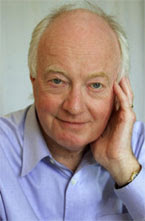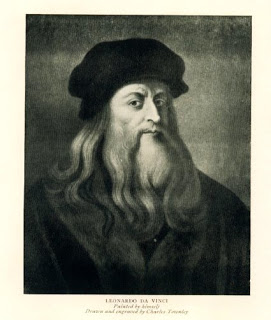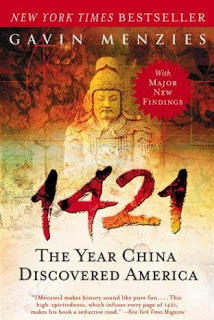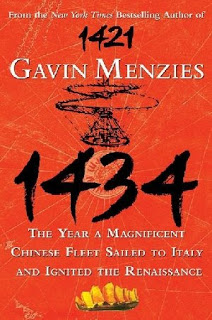Philosophy
 Gavin Menzies
Gavin Menzies
 Leonardo da Vinci
Leonardo da Vinci

1421: The Year China Discovered America
ISBN-10: 0060537639
ISBN-13: 978-0060537630

1434: The Year A Magnificent Chinese Fleet Sailed To Italy and Ignited The Renaissance
ISBN-10: 0061492175
ISBN-13: 978-0061492174
- Chinese Pyramids And The Sun
Chinese pyramids are ancient burial mounds of several early emperors and empresses of China and their relatives. Many pyramids are located near Xi'an, in Shaanxi Province. In this province, in the Lintong district, we find the huge Mausoleum of the...
- Vitruvius' "ten Books On Architecture", Leonardo Da Vinci, And...vitruvian Man
"The Other Vitruvian Man"Was Leonardo da Vinci's famous anatomical chart actually a collaborative effort?by Toby LesterFebruary 2012Smithsonian In 1986, during a visit to the Biblioteca Comunale Ariostea, in Ferrara, Italy, an architect named Claudio...
- China, Rare Earths--trickle Down Effect
"Japan's rare earth minerals may run out by March: govt" Japan's stockpile of rare earth minerals could dry up by March or April without fresh imports from China, which has stopped shipping them, a senior Japanese government official said Thursday....
- "eric Von Daniken" Poll
Remember Eric von Daniken? Did you consider him credible? Yes...0 No...2 An extraordinary charlatan who made a lot of money in print and film and mislead a lot of gullible people. And so is Gavin Menzies . Eric von Daniken Pseudoscience...be careful...
- Ge Ge--niels Bohr's Chinese Translator
The history of science is littered with little unknown items and such is the case here...the Chinese translator of the works of Neils Bohr...Professor Ge Ge. "A Hero of History of Science: Niels Bohr's Chinese Translator" American Institute of Physics...
Philosophy
Gavin Menzies--back at it again
 Gavin Menzies
Gavin Menzies Leonardo da Vinci
Leonardo da VinciGavin Menzies is at it again...this time claiming that "Leonardo da Vinci's drawings of machines are uncannily similar to Chinese originals and were undoubtedly derived from them...." in his new book 1434: The Year A Magnificent Chinese Fleet Sailed To Italy and Ignited The Renaissance. His last historical failure was the subject of a PBS two part series "Zheng He's Expedition" where he claimed the possibility of a Chinese fleet circumnavigating the Earth and particularly visiting North America's northeast coast line.
The story goes like this. Time: 15th Century China. Expeditions were commissioned by the Ming Emperor Zhu Di and commanded admiral Zheng He. A large flotilla was set into movement discovering denizens from the coats of China to the tip of Africa. Trade flourished and these expeditions are well documented. The proposed hypothesis by Gavin Menzies takes off when the fleet leaves the Cape of Good Hope, sails up the western coast of Africa, and takes advantage of trade winds and ocean currents to arrive in the Caribbean, up the eastern American coast, up to Greenland, and throughout the rest of the world. So the story goes and Gavin Menzies offers evidence. Maybe. Not one shred of evidence can be verified to support such a claim.
Now one can enter "Gavin Menzies" into one's favorite search engine and find a lot of material debunking his assertions.
And now he is currently drawing attention to the authenticity of Leonardo da Vinci's drawings.
Leonardo da Vinci's drawings of machines are uncannily similar to Chinese originals and were undoubtedly derived from them, a British amateur historian says in a newly-published book.
Gavin Menzies sparked headlines across the globe in 2002 with the claim that Chinese sailors reached America 70 years before Christopher Columbus.
Now he says a Chinese fleet brought encyclopedias of technology undiscovered by the West to Italy in 1434, laying the foundation for the engineering marvels such as flying machines later drawn by Italian polymath Leonardo.
"Everything known to the Chinese by the year 1430 was brought to Venice," said Menzies, a retired Royal Navy submarine commander, in an interview at his north London home.
From Venice, a Chinese ambassador went to Florence and presented the material to Pope Eugenius IV, Menzies says.
"I argue in the book that this was the spark that really ignited the renaissance and that Leonardo and (Italian astronomer) Galileo built on what was brought to them by the Chinese.
"Leonardo basically redrew everything in three dimensions, which made a vast improvement."
If accepted, the claim would force an "agonizing reappraisal of the Eurocentric view of history", Menzies says in his book "1434: The Year A Magnificent Chinese Fleet Sailed To Italy and Ignited The Renaissance".
NONSENSE
The urbane 70-year-old sold more than a million copies of his first book, "1421", which argued Chinese sailors mapped the world in the early 1400s shortly before abandoning global seafaring.
His theories are dismissed as nonsense by many academics -- Menzies says Chinese fleets reached Australia and New Zealand as well as America before European explorers -- but have gained an international following among readers.
"This whole fantasy about Europe discovering the world is just nonsense," said Menzies.
In his latest book -- published in the United States in June and this month in Britain -- Menzies says four ships from the same Chinese expeditions reached Venice, bringing with them world maps, astronomical charts and encyclopedias far in advance of anything available in Europe at the time.
Menzies says Leonardo's designs for machines can be traced back to this transfer of Chinese knowledge.
Leonardo, born in 1452, is perhaps best known for his enigmatic "Mona Lisa" portrait of a woman in Paris's Louvre Museum, but he also left journals filled with intricate engineering and anatomical illustrations.
Menzies says designs for gears, waterwheels and other devices contained in Chinese encyclopedias reached Leonardo after being copied and modified by his Italian antecedents Taccola and Francesco di Giorgio.
To support his argument, Menzies publishes drawings of siege weapons, mills and pumps from a 1313 Chinese agricultural treatise, the Nung Shu, and from other pre-1430 Chinese books, next to apparently similar illustrations by Leonardo, Di Giorgio and Taccola.
"By comparing Leonardo's drawings with the Nung Shu we have verified that each element of a machine superbly illustrated by Leonardo had previously been illustrated by the Chinese in a much simpler manual," Menzies writes.
"It's very suggestive, very interesting, but the hard work remains to be done," said Martin Kemp, Professor of the History of Art at Oxford University and author of books on Leonardo.
"He (Menzies) says something is a copy just because they look similar. He says two things are almost identical when they are not," Kemp said.
"It's not strong on historical method," he added. But Kemp said he would look out for any signs that Leonardo had access to Chinese material, directly or indirectly, when studying his manuscripts in future.
COMPLICATED
"I will keep my eye open, without thinking it is going to turn Leonardo studies or any studies of 15th century technology upside down."
Kemp said the source of the claimed Chinese influence was a separate issue.
"There is a whole series of questions a historian would ask about mediaeval technology, about Islamic technology, about transmission across trade routes, the Silk Route in particular.
"It's a terrifically complicated area and having a Chinese person in Florence in 1434 ends up giving that person a hell of a lot of work to do."
Menzies bases his claim that a Chinese ambassador went to Florence on a copy of a letter dated 1474 by Italian mathematician Toscanelli found among Columbus's papers.
Menzies publishes a translation from the letter reading: "In the days of Pope Eugenius there came a Chinese ambassador to him," although this is not explicit in the original Latin text.
"It's drivel", said Felipe Fernandez-Armesto, a British expert on maritime exploration who is a professor of history at Tufts University in the United States and at Queen Mary College, University of London.
"No reputable scholar would think that there is any reason to suppose that the person referred to by Toscanelli was Chinese," he told Reuters.
Geoff Wade, a senior research fellow at the National University of Singapore's Asia Research Institute, said Menzies' book and theories should be reclassified as historical fiction.
"Certainly Chinese ideas came to Europe and European ideas went to Iran and onwards," Wade said in a telephone interview.
"But the premise of the book that there was a Chinese fleet in 1434 which went to Italy is completely without any substance.
"There is absolutely no Chinese evidence for it."
Menzies brushes off the criticism, pointing to shelves of files in the rooms of his basement study filled with material he says supports his theories, much contributed by readers of his books and associated Web sites.
"I say the claim that critics make that there is no evidence is absolute rubbish. There is stacks and stacks of evidence.
"It's not me that's the fantasist, it's the historians who persist in this complete rubbish which is currently taught as history."
The story goes like this. Time: 15th Century China. Expeditions were commissioned by the Ming Emperor Zhu Di and commanded admiral Zheng He. A large flotilla was set into movement discovering denizens from the coats of China to the tip of Africa. Trade flourished and these expeditions are well documented. The proposed hypothesis by Gavin Menzies takes off when the fleet leaves the Cape of Good Hope, sails up the western coast of Africa, and takes advantage of trade winds and ocean currents to arrive in the Caribbean, up the eastern American coast, up to Greenland, and throughout the rest of the world. So the story goes and Gavin Menzies offers evidence. Maybe. Not one shred of evidence can be verified to support such a claim.
Now one can enter "Gavin Menzies" into one's favorite search engine and find a lot of material debunking his assertions.
And now he is currently drawing attention to the authenticity of Leonardo da Vinci's drawings.
"Columbus debunker sets sights on Leonardo da Vinci"
by
Tim Castle
July 29th, 2008
Reuters
by
Tim Castle
July 29th, 2008
Reuters
Leonardo da Vinci's drawings of machines are uncannily similar to Chinese originals and were undoubtedly derived from them, a British amateur historian says in a newly-published book.
Gavin Menzies sparked headlines across the globe in 2002 with the claim that Chinese sailors reached America 70 years before Christopher Columbus.
Now he says a Chinese fleet brought encyclopedias of technology undiscovered by the West to Italy in 1434, laying the foundation for the engineering marvels such as flying machines later drawn by Italian polymath Leonardo.
"Everything known to the Chinese by the year 1430 was brought to Venice," said Menzies, a retired Royal Navy submarine commander, in an interview at his north London home.
From Venice, a Chinese ambassador went to Florence and presented the material to Pope Eugenius IV, Menzies says.
"I argue in the book that this was the spark that really ignited the renaissance and that Leonardo and (Italian astronomer) Galileo built on what was brought to them by the Chinese.
"Leonardo basically redrew everything in three dimensions, which made a vast improvement."
If accepted, the claim would force an "agonizing reappraisal of the Eurocentric view of history", Menzies says in his book "1434: The Year A Magnificent Chinese Fleet Sailed To Italy and Ignited The Renaissance".
NONSENSE
The urbane 70-year-old sold more than a million copies of his first book, "1421", which argued Chinese sailors mapped the world in the early 1400s shortly before abandoning global seafaring.
His theories are dismissed as nonsense by many academics -- Menzies says Chinese fleets reached Australia and New Zealand as well as America before European explorers -- but have gained an international following among readers.
"This whole fantasy about Europe discovering the world is just nonsense," said Menzies.
In his latest book -- published in the United States in June and this month in Britain -- Menzies says four ships from the same Chinese expeditions reached Venice, bringing with them world maps, astronomical charts and encyclopedias far in advance of anything available in Europe at the time.
Menzies says Leonardo's designs for machines can be traced back to this transfer of Chinese knowledge.
Leonardo, born in 1452, is perhaps best known for his enigmatic "Mona Lisa" portrait of a woman in Paris's Louvre Museum, but he also left journals filled with intricate engineering and anatomical illustrations.
Menzies says designs for gears, waterwheels and other devices contained in Chinese encyclopedias reached Leonardo after being copied and modified by his Italian antecedents Taccola and Francesco di Giorgio.
To support his argument, Menzies publishes drawings of siege weapons, mills and pumps from a 1313 Chinese agricultural treatise, the Nung Shu, and from other pre-1430 Chinese books, next to apparently similar illustrations by Leonardo, Di Giorgio and Taccola.
"By comparing Leonardo's drawings with the Nung Shu we have verified that each element of a machine superbly illustrated by Leonardo had previously been illustrated by the Chinese in a much simpler manual," Menzies writes.
"It's very suggestive, very interesting, but the hard work remains to be done," said Martin Kemp, Professor of the History of Art at Oxford University and author of books on Leonardo.
"He (Menzies) says something is a copy just because they look similar. He says two things are almost identical when they are not," Kemp said.
"It's not strong on historical method," he added. But Kemp said he would look out for any signs that Leonardo had access to Chinese material, directly or indirectly, when studying his manuscripts in future.
COMPLICATED
"I will keep my eye open, without thinking it is going to turn Leonardo studies or any studies of 15th century technology upside down."
Kemp said the source of the claimed Chinese influence was a separate issue.
"There is a whole series of questions a historian would ask about mediaeval technology, about Islamic technology, about transmission across trade routes, the Silk Route in particular.
"It's a terrifically complicated area and having a Chinese person in Florence in 1434 ends up giving that person a hell of a lot of work to do."
Menzies bases his claim that a Chinese ambassador went to Florence on a copy of a letter dated 1474 by Italian mathematician Toscanelli found among Columbus's papers.
Menzies publishes a translation from the letter reading: "In the days of Pope Eugenius there came a Chinese ambassador to him," although this is not explicit in the original Latin text.
"It's drivel", said Felipe Fernandez-Armesto, a British expert on maritime exploration who is a professor of history at Tufts University in the United States and at Queen Mary College, University of London.
"No reputable scholar would think that there is any reason to suppose that the person referred to by Toscanelli was Chinese," he told Reuters.
Geoff Wade, a senior research fellow at the National University of Singapore's Asia Research Institute, said Menzies' book and theories should be reclassified as historical fiction.
"Certainly Chinese ideas came to Europe and European ideas went to Iran and onwards," Wade said in a telephone interview.
"But the premise of the book that there was a Chinese fleet in 1434 which went to Italy is completely without any substance.
"There is absolutely no Chinese evidence for it."
Menzies brushes off the criticism, pointing to shelves of files in the rooms of his basement study filled with material he says supports his theories, much contributed by readers of his books and associated Web sites.
"I say the claim that critics make that there is no evidence is absolute rubbish. There is stacks and stacks of evidence.
"It's not me that's the fantasist, it's the historians who persist in this complete rubbish which is currently taught as history."

1421: The Year China Discovered America
ISBN-10: 0060537639
ISBN-13: 978-0060537630

1434: The Year A Magnificent Chinese Fleet Sailed To Italy and Ignited The Renaissance
ISBN-10: 0061492175
ISBN-13: 978-0061492174
- Chinese Pyramids And The Sun
Chinese pyramids are ancient burial mounds of several early emperors and empresses of China and their relatives. Many pyramids are located near Xi'an, in Shaanxi Province. In this province, in the Lintong district, we find the huge Mausoleum of the...
- Vitruvius' "ten Books On Architecture", Leonardo Da Vinci, And...vitruvian Man
"The Other Vitruvian Man"Was Leonardo da Vinci's famous anatomical chart actually a collaborative effort?by Toby LesterFebruary 2012Smithsonian In 1986, during a visit to the Biblioteca Comunale Ariostea, in Ferrara, Italy, an architect named Claudio...
- China, Rare Earths--trickle Down Effect
"Japan's rare earth minerals may run out by March: govt" Japan's stockpile of rare earth minerals could dry up by March or April without fresh imports from China, which has stopped shipping them, a senior Japanese government official said Thursday....
- "eric Von Daniken" Poll
Remember Eric von Daniken? Did you consider him credible? Yes...0 No...2 An extraordinary charlatan who made a lot of money in print and film and mislead a lot of gullible people. And so is Gavin Menzies . Eric von Daniken Pseudoscience...be careful...
- Ge Ge--niels Bohr's Chinese Translator
The history of science is littered with little unknown items and such is the case here...the Chinese translator of the works of Neils Bohr...Professor Ge Ge. "A Hero of History of Science: Niels Bohr's Chinese Translator" American Institute of Physics...
